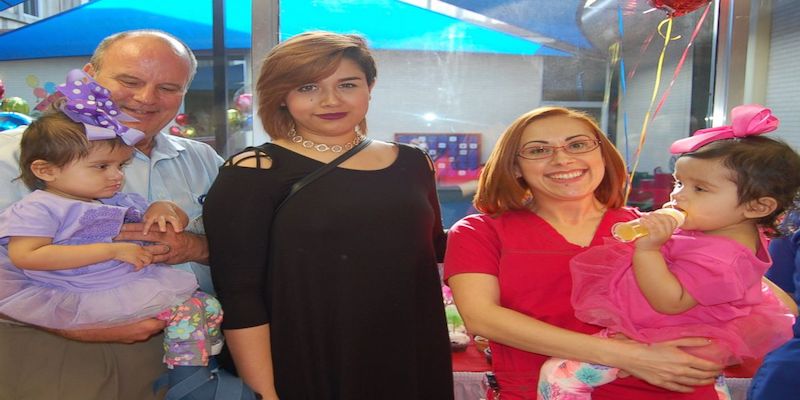Close to a year after being separated, formerly conjoined twin girls got a special send-off at the hospital where they had the extraordinary surgery.
Scarlett and Ximena Hernandez-Torres were celebrated by the staff at Driscoll Children’s Hospital in Corpus Christi, Texas, on Monday night. Their family joyfully prepared them to finally head home after nearly two years being treated or getting rehab there.
The girls were born in May 2015 and were rushed to Driscoll Children’s Hospital as newborns as they were conjoined. They have been either patients at the hospital, or living nearby for rehab for their entire lives. The hospital staff and the girls’ family had a celebration on Monday, to bid farewell before the move back to the Rio Grande Valley in Texas.
“We are delighted that the twins are doing great,” Pediatric surgeon Dr. Haroon Patel, who helped separate the girls, said in a statement. “We are happy that they are going home to their loved ones, and will miss taking care of them here in Corpus Christi.”
During their party, the girls got to play on a special playground at the hospital and got to spend time with the doctors, nurses and other medical staff who treated them while they were still conjoined and post the surgery as they went through rehabilitation.
“Since discharge from Driscoll Children’s Hospital, the children have been seen multiple times per week by physical therapy, occupational therapy, and speech pathology staff,” Susan T. Fields, director of rehabilitation services at Driscoll Children’s Hospital, said in a statement. “They have progressed well and are learning how to navigate their world as independent toddlers.”
After the move, the girls will still be seen at satellite clinics closer to their home, hospital officials said.
The girls were born joined at the waist. They shared a colon and bladder, according to the Driscoll Children’s Hospital. They were born as triplets with a third sister who is not conjoined – which is a 1 in 50 million occurrence.
Scarlett and Ximena were separated last year April during a 12-hour surgery with dozens of medical staff present during the operation. Doctors used a special scanner called a “spy camera” throughout the surgery to understand the complicated blood flow between the sisters and help them stay healthy during the long ordeal. They also used a 3-D model from a specialized MRI, designed to help them map out the surgery.
After the surgery last year, the girls’ mother, Silvia Hernandez, said that she could already see the girls’ personalities coming through.
“Scarlett likes to dance, sing and she smiles a lot,” Hernandez said. “Ximena is most of the time sleeping but she smiles a lot.”
What a great milestone to celebrate!
